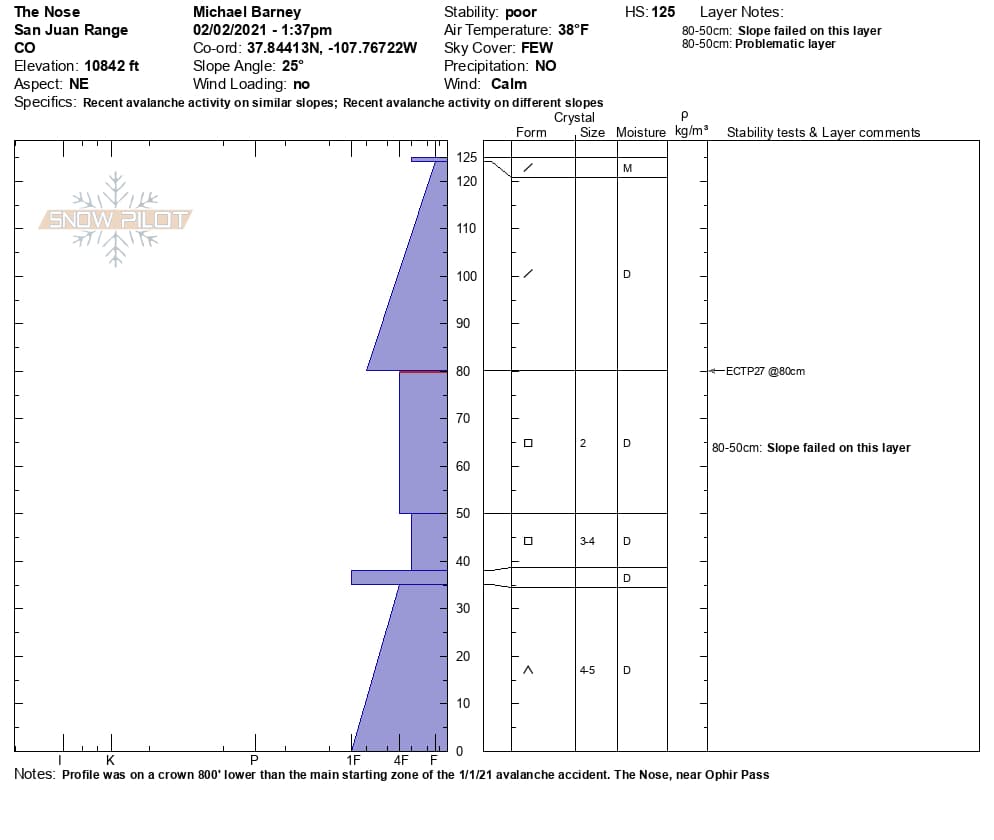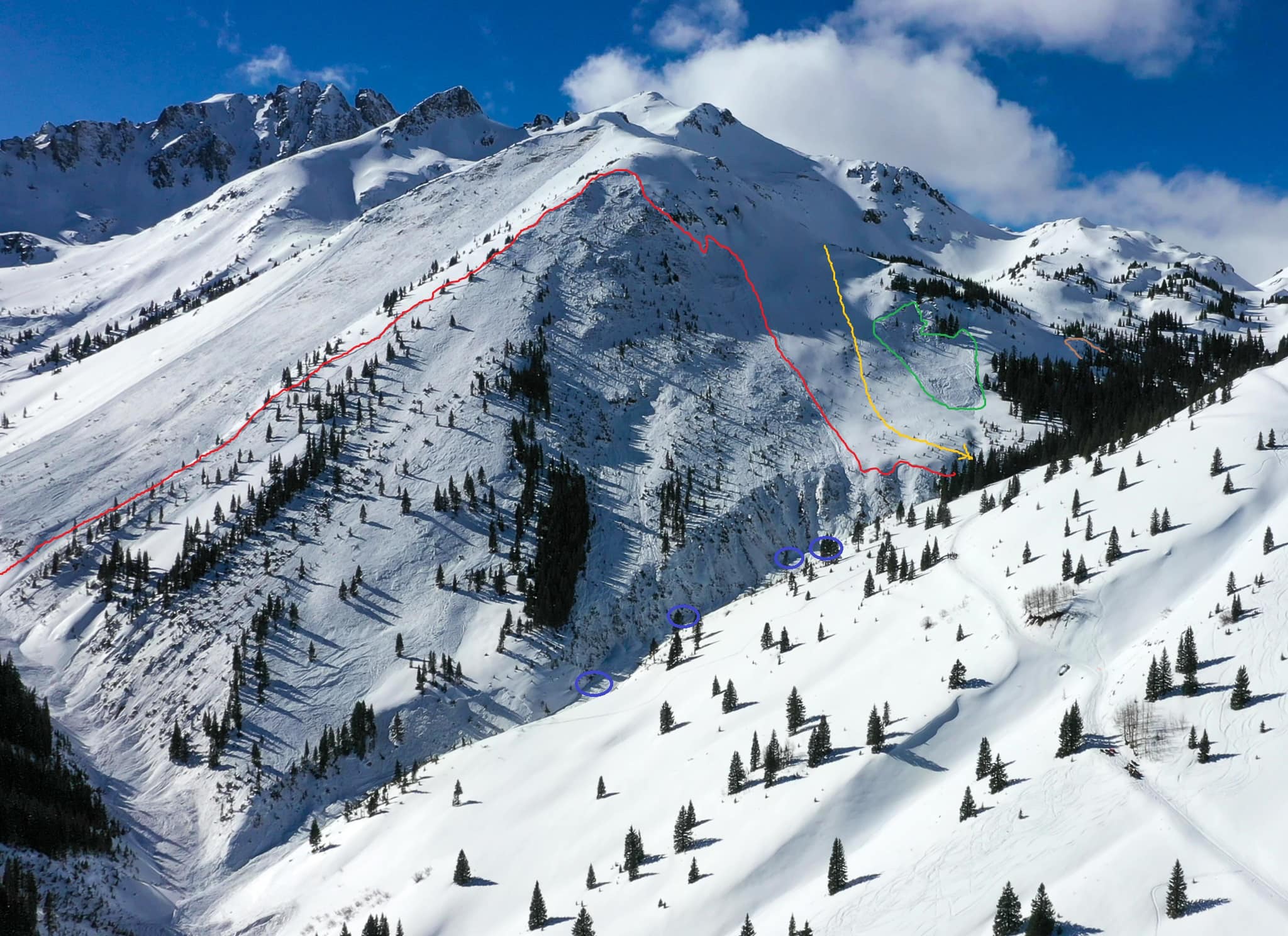
A group of backcountry skiers triggered an avalanche in an area known as The Nose, between Silverton and Ophir on February 1st. Four of the party were caught, carried, and fully buried. One was rescued with minor injuries, but three unfortunately died.
Below is the full report from the CAIC:
Avalanche Details
- Location: The Nose, Middle Fork Mineral Creek southeast of Ophir
- State: Colorado
- Date: 2021/02/01
- Time: 3:20 PM (Estimated)
- Summary Description: 4 backcountry tourers caught, 1 partially buried-critical, 3 buried and killed
- Primary Activity: Backcountry Tourer
- Primary Travel Mode: Ski
- Location Setting: Backcountry
Number
- Caught: 4
- Partially Buried, Non-Critical: 0
- Partially Buried, Critical: 1
- Fully Buried: 3
- Injured: 1
- Killed: 3
Avalanche
- Type: SS
- Trigger: AS – Skier
- Trigger (subcode): u – An unintentional release
- Size – Relative to Path: R3
- Size – Destructive Force: D2.5
- Sliding Surface: O – Within Old Snow
Site
- Slope Aspect: NE
- Site Elevation: 12130 ft
- Slope Angle: 40 °
- Slope Characteristic: Planar Slope
Avalanche Comments
This was a soft slab avalanche unintentionally triggered by a group of skiers. The avalanche was medium sized relative to the path and large enough to injure, bury, or kill a person. The avalanche ran into a narrow gully, where the debris was more than 20 feet deep in places. The avalanche broke on a layer of faceted snow buried on January 22 (about 18 inches below the snow surface on February 1). As the avalanche propagated up the slope it broke into depth hoar at the ground in the steep and rocky areas and in portions of the gully (SS-ASu-R3D2.5-O). The avalanche propagated around a ridge terrain feature and ran on slopes facing northeast to east to southeast. The crown face of the avalanche was two to three feet deep and over five feet at the deepest point. The avalanche was up to 1000 feet wide and ran 1500 vertical feet. It was a Persistent Slab avalanche. Two smaller avalanches released sympathetically on similar aspects near treeline (SS-ASy-R3-D2-O and SS-ASy-R2-D1-O).
Backcountry Avalanche Forecast
The Colorado Avalanche Information Center’s (CAIC) North San Juan zone rated the avalanche danger as Considerable (Level 3) near and above treeline, and Moderate (Level 2) below treeline. The forecast listed Persistent Slab avalanches as the primary problem near and above treeline on all aspects. The likelihood of triggering was Likely and the potential size was Small to Large. The summary statement read:
We have seen large and dangerous natural and human triggered avalanches at upper elevations on northwest to north through southeast aspects in the last few days. Slopes that fit these descriptions that have not yet slid should be treated with extreme caution. Below treeline slopes may not propagate as wide, but avalanches will be deep and can be dangerous if they push you into trees or a terrain trap. You are most likely to trigger these avalanches on steep convex rolls or in previously wind affected open areas.
Low-angle terrain well away from steep slopes or lower elevation terrain less steep than 35 degrees can provide safer riding options.
Weather Summary
The winter of 2020-2021 started dry. Long dry periods separated storms that together produced below average snowfall. On December 31, 2020, the Red Mountain Pass SNOTEL site, five miles north and at a similar elevation to the accident site, had a total accumulation of 8.4 inches of snow water equivalent (SWE), 86% of median for the 1981-2010 reference period.
The CAIC maintains a snow study site at Red Mountain Pass. From January 7 to 22, forecasters measured 3 inches of snow and 0.2 inches of SWE. The Red Mountain Pass SNOTEL showed 74% of median SWE on January 22.
A strong winter storm moved into southwest Colorado on January 22. By January 30, forecasters recorded 35.5 inches of snow and 2.7 inches of SWE. About 20% of the season’s snowfall fell during these stormy eight days. The CAIC maintains an automated weather station at 12,852 feet and three miles north of the accident site (the Eagle station). In the week preceding the avalanche, the winds at Eagle were primarily from the south and southwest, averaging 10 to 20 mph with gusts of over 40 mph. On January 29, average wind speeds increased to 20-30 mph with gusts up to 70mph. On January 30, winds switched to the north and slowly decreased through midday on January 31. On February 1, southerly winds had returned at speeds of 10 to 15 mph with gusts to 30mph.
On February 1, temperatures measured at the Red Mountain Pass SNOTEL weather station (elevation 11200 feet and about 4 miles to the northwest) crested 32 degrees 11:00 AM and stayed above freezing for seven hours.
Snowpack Summary
Prior to January 22, small storms separated by periods of cold, dry weather resulted in a shallow and weak snowpack. Starting in mid-December, storms with more than about 8 inches of snow resulted in avalanche cycles with numerous natural and human-triggered avalanches breaking on the faceted snow layers.
Between January 22 and 31, the CAIC documented 113 natural and human-triggered avalanches on most aspects and all elevation bands. Avalanche sizes ranged from small to very large, or D1 to D3 on the Destructive Scale. Most of the avalanches were breaking on a weak layer of faceted snow that was on the surface before snowfall began on January 22. The largest avalanches that released during this time broke into older layers of faceted snow near the ground.
Events Leading to the Avalanche
On Monday, February 1 a group of seven friends met in Silverton for a multi-day trip to a backcountry hut east of Ophir Pass. They ranged in age from mid 30s to mid 50s. Some had been backcountry skiing together for many years, while others were new additions to the group. Several of them had made annual trips into this hut for at least ten years. Four members of the group had been in the area since Friday skiing in the backcountry and with a local helicopter skiing operation. Three members of the group arrived Sunday evening.
The group left Silverton around 10:30 AM and drove to the winter closure of CR8 (Ophir Pass Rd). At the trailhead the group checked transceivers and discussed avalanche conditions. They left the trailhead around 11:30 AM. They identified the south-facing slopes above CR8 as a potential avalanche hazard and traveled one at a time below them to reduce their exposure. They arrived at the hut around 1:00 PM and spent about an hour there before heading out for an afternoon tour.
The group discussed assessing avalanche conditions on a terrain feature known as The Nose, which is between Crystal Lake and the Middle Fork of Mineral Creek. On previous trips they had skied this slope, but did not plan to ski it that afternoon. Before leaving the hut they talked with the hut keeper who said there had been “lots of [avalanche] activity on all aspects, and today is the warmest day since December.”
They left the hut and climbed a short distance before descending a southwest-facing slope into the drainage between CR8 and The Nose. They climbed a gentle ridge to the south heading towards The Nose.They reached a small saddle at about 11,800 feet, and decided to descend a northeast facing, sparsely treed slope. The group rode down one at a time and started to regroup on a knob just above a steep-walled gully at the bottom of the slope. Before the entire group collected on the knob, the first skiers to arrive began skiing down the rest of the slope, and into the gully towards the Middle Fork of Mineral Creek.
Accident Summary
Rider 1 skied down from the knob and into the gully. Riders 2 and 3 followed the same path, skiing close to each other. While Rider 2 continued down the gully, Rider 3 stopped along the skier’s right wall. Rider 4 slid over the convex roll at the gully entrance to yell down, telling Rider 3 to move to the left side of the gully and avoid the steeper slopes on the right. All four were moving down the gully when the avalanche released at about 3:20 PM.
The avalanche caught Riders 1, 2, 3, and 4. Rider 4 described the avalanche as two waves. The first wave slowly pulled him into the gully, but he was able to stay on his feet. Thinking there was enough snow to bury him if he fell over, he deployed the avalanche airbag on his backpack. After the snow stopped he was standing in the gully. Seconds later a larger wave of snow hit him from behind. Rider 4 immediately lost his skis and poles. He was engulfed in snow and tumbled violently. “It felt like I was in a river and I was fully under the snow for approximately 15 to 25 seconds” Rider 4 explained, and was “moving very fast a significant way down the gully”. When the avalanche stopped, Rider 4 was buried in the debris with his head under the snow, but a portion of his airbag was visible on the surface (partially buried-critical). Riders 1, 2, and 3 were completely buried in the avalanche debris.
Rescue Summary
The rest of the group rode down onto the debris pile and started a transceiver search. They saw Rider 4’s airbag and quickly dug him out. Rider 4 had injured his knee and lost both skis and poles in the avalanche.
The group continued down the gully and picked up two transceiver signals very close to each other. They found a third signal about 100 yards (91 m) further down the gully. The lowest distance readings they could get on their transceivers was between 4 and 5 meters. The four riders dug for over two hours. In the holes they dug they eventually got distance readings of 1.5 to 2 meters, and struck one of the buried riders with a probe pole. They sent an SOS message from their InReach device around 4:40 PM. San Juan County Search and Rescue got the group’s message and mobilized around 5:00 PM.
At nightfall the four survivors were exhausted and made the difficult decision to start back to the hut. They built snowshoes out of tree branches for Rider 4. They reached CR8 and made contact with San Juan County Search and Rescue members around 7:30 PM. The rescue team brought the four riders back to the trailhead about 10:00 PM and suspended operations overnight.
The recovery operation resumed the morning of February 2. San Juan County enlisted the help of Telluride Helitrax, who dropped explosives on slopes that threatened the rescue area. They triggered several large avalanches on adjacent slopes. The rescue team reached the accident site and recovered Riders 1 and 2, however it was a very warm day and the search was suspended in the afternoon after a large wet avalanche on a south-facing slope crossed CR8. Rescue teams returned on February 3 and worked into the evening, recovering Rider 3. The three riders were spaced out along the right side of the gully, about 100 yards from each other. They were buried nine, eleven, and twenty feet deep (3, 3.5, and 6 meters). Searchers had to use power tools to extricate the riders from the dense avalanche debris and flew the riders out with a helicopter on the afternoon of February 4. Over 30 rescuers from multiple agencies were involved in the search and recovery, including the San Juan County Sheriff’s Office, San Juan County Office of Emergency Management, San Juan County Search and Rescue, San Juan/Silverton Ambulance, La Plata County Search and Rescue, Telluride Helitrax, and the Colorado Avalanche Information Center.
Comments
All of the fatal avalanche accidents we investigate are tragic events. We do our best to describe each one to help the people involved and the community as a whole better understand factors that may have contributed to the outcome. We offer these comments in the hope that it will help people avoid future avalanche accidents.
Moving a large group through avalanche terrain one at a time requires considerable time and careful coordination. Small communication errors and misunderstandings can be amplified in large groups. This challenge may have played a role in this accident. Some of the party expected everyone to regroup on the knob above the gully, yet Rider 1 started down the gully before the rest of the group arrived. He was quickly followed by Riders 2, 3, and 4. There were suddenly four riders in the gully, all out of sight of the people on the knob when the avalanche released.
The avalanche caught the four riders in a narrow gully where debris piled up extremely deep. Rider 4’s position higher in the gully, staying more skier’s left, and his airbag likely all reduced his burial depth. The others were not as lucky, and were deeply buried. In a terrain trap like this gully, the depth of avalanche debris can vary dramatically over a very small distance.
Digging a person out of avalanche debris is by far the most time consuming portion of a rescue. Deep burials are very difficult for a small team to manage. The debris is almost always very hard. Equipment breaks, people tire quickly, and just managing the snow you are removing becomes a monumental task. The four riders worked for hours and only got through the top half of avalanche debris above the victims. Anyone who has dealt with avalanche debris over a few feet deep will tell you the digging gets more difficult and more complicated the deeper you go. Eventually it took an organized search and rescue group, with many people and power tools, two days to recover all three riders.
The group and search and rescue personnel both detected two transceiver signals in close proximity at one of the burial sites. This led them to believe that Riders 2 and 3 were buried very near each other. They eventually determined the signal came from a single avalanche transceiver that was over 10 years old. Over the last 10 years the standards for avalanche rescue transceivers have improved. Although not common, modern transceivers can sometimes recognize the signal from certain old transceivers as two signals, a primary and ghost signal. In this case the age of the skier’s rescue device did not play a significant role in the outcome of the accident. However, it is a good reminder to make sure you understand the performance of the equipment you and your partners are using. Most avalanche rescue organizations and transceiver manufacturers recommend retiring devices that are more than 10 years old.
Media
Images
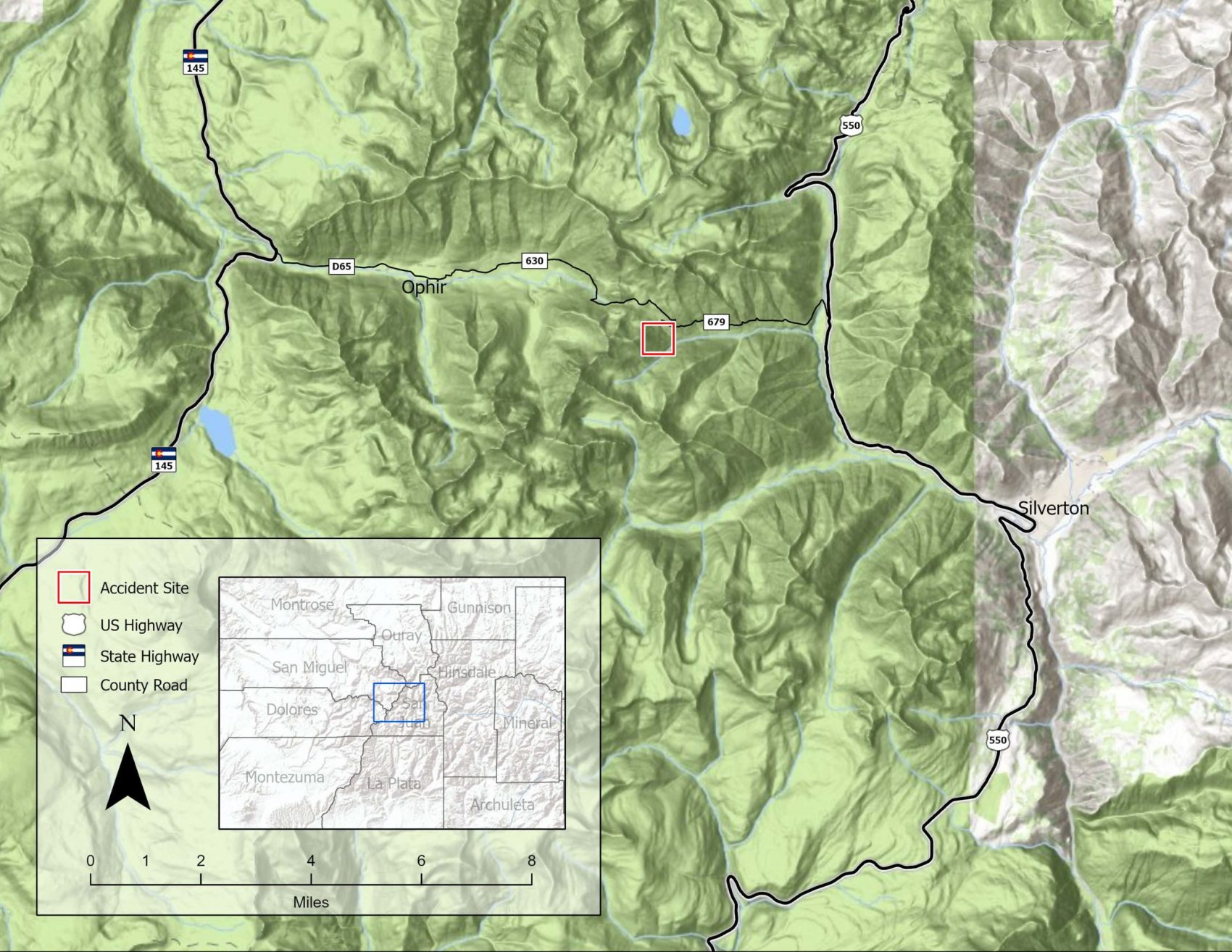
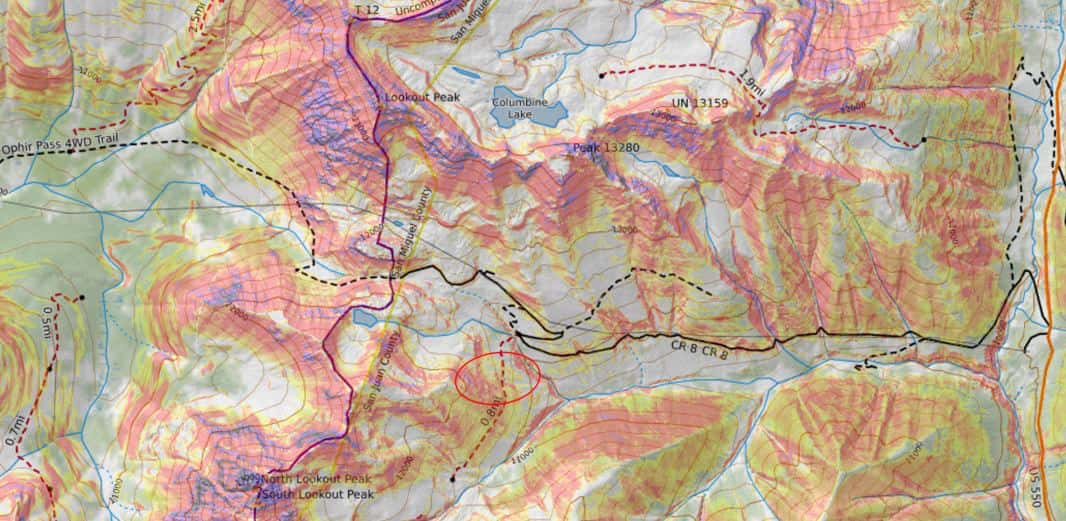
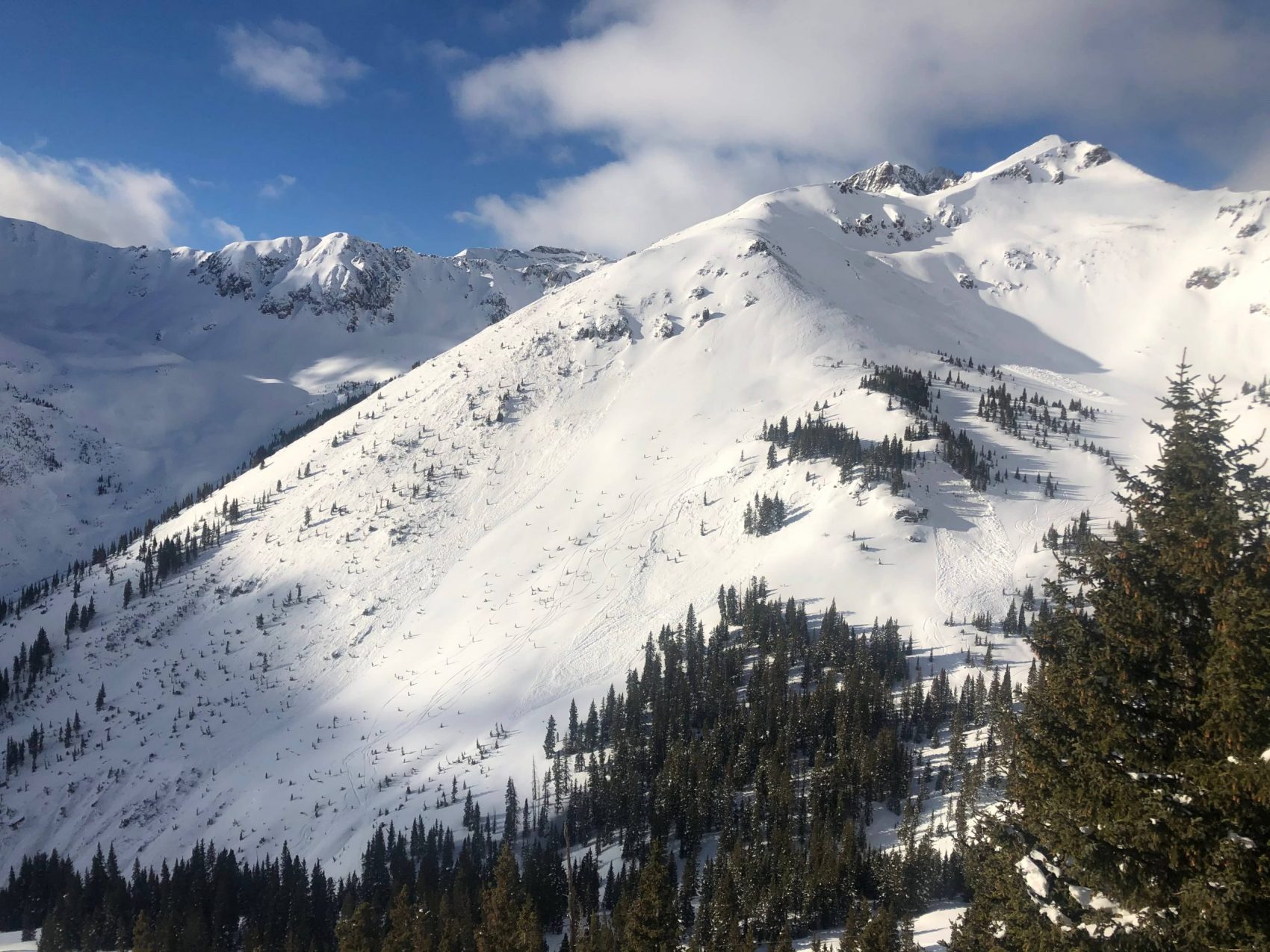

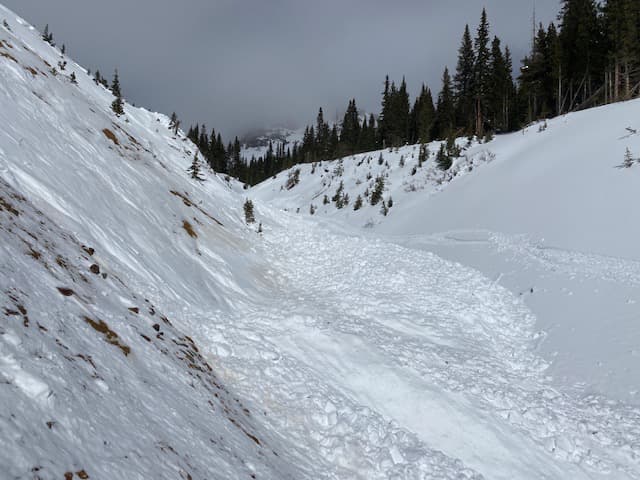
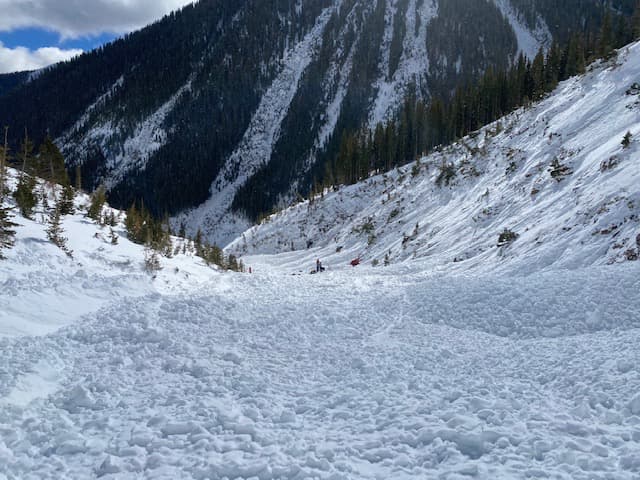
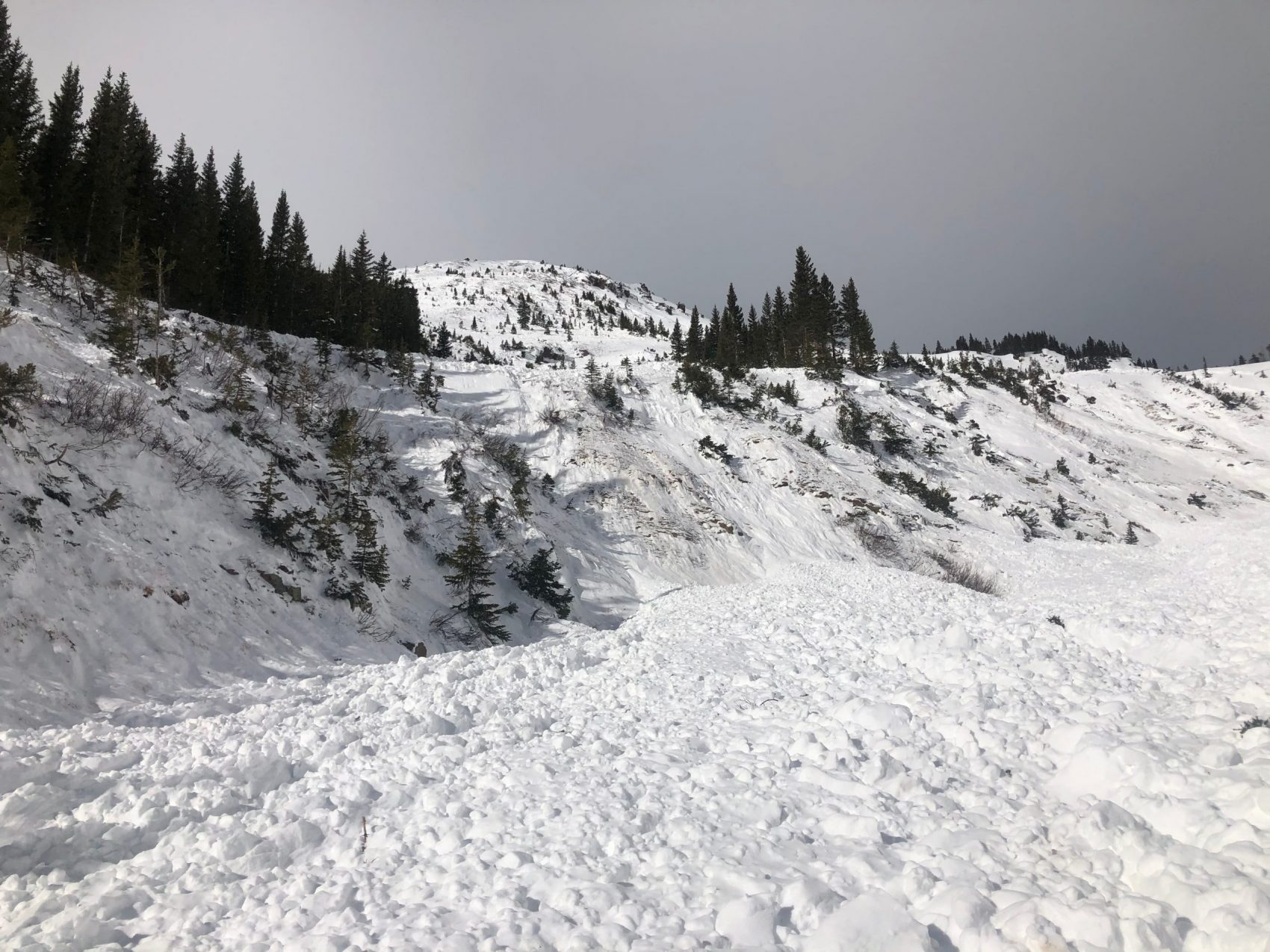
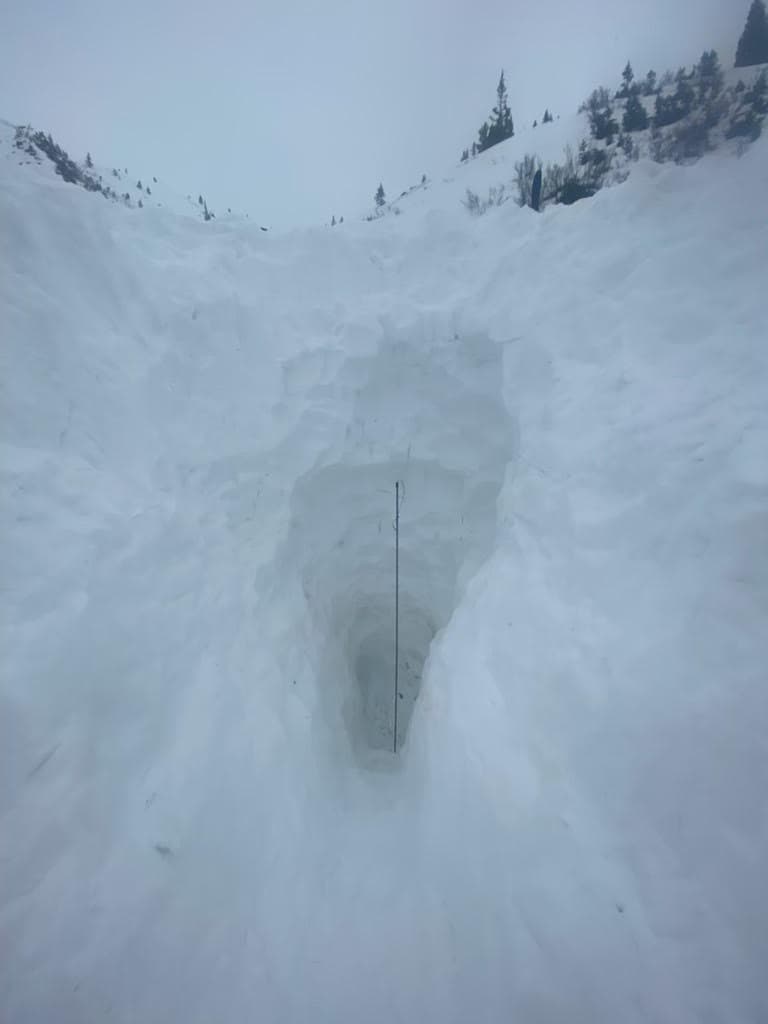
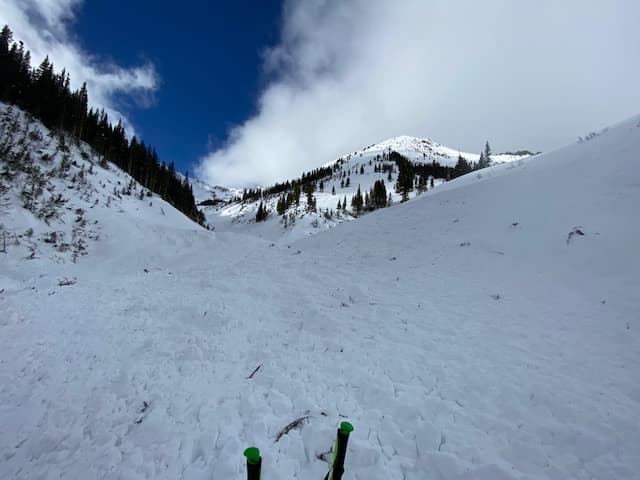
Snowpits
